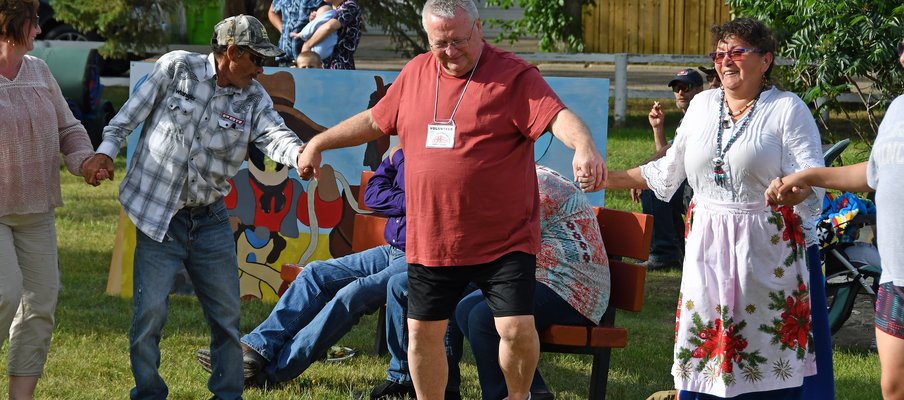
Volunteer Helps Cultural Centre on a Sustainable Path Forward
In this issue
 Engage - Volume 13, Issue 2, Spring 2023
Engage - Volume 13, Issue 2, Spring 2023
Related Programs
When Donny White found the Jasper Cultural and Historical Centre struggling seven years ago, the retired arts and heritage administrator, knew the organization needed a culture shift.
“They didn’t have a professional base and they didn’t have funding that was going to take them forward. After 30 years, the Centre wouldn’t make it much further than three or six months,” says White, the volunteer manager and board chair.
For years the Jasper Centre in Maple Creek, SK, which serves as a museum and art gallery, was run by a dedicated group of volunteers, in a large space that used to be one of the town’s schools built in two phases in 1910 and 1914.
As it happens with many volunteer-driven non-profits, that way of operating was no longer working. White recognized this and looked to change how those involved viewed the Centre’s finances. White says the motto now is “make or break even.”
In other words, “if the Centre was going to be successful, it had to be run more or less as a business and that we would not enter into any venture unless we broke even or made a profit.”
Another shift White made was recognizing the Centre needed financial stability through fundraising initiatives, so they began running donation campaigns in 2017.
While these changes helped, it was an outsider to the community who also played a huge role in financially revitalizing the organization through the $25,000 purchase of two steam-punk metal horse sculptures from the museum. Then after the roof blew off the museum in a wind storm and the brick work on the two and half front façade required emergency work, that same donor came through again with a $250,000 donation.
Alongside stabilizing the Centre financially, the longstanding volunteers were also key to keeping the organization afloat during the transition. Many served their terms on the board, then continuing to volunteer in other capacities, saving the Centre money. White adds, there were 75 volunteers involved in the production of one of the summer festivals in 2022.
White says although the path to sustainability wasn’t easy, the future of the museum and cultural hub looks better now. With a new manager in training at the centre (the first paid staff member since 2015), White is preparing to step down after his six years as board chair and acting manager to a simpler volunteer role.
On the programming side, the Centre continues to expand its offerings. White also attributes the Centre’s recent successes to its ability to resist what he calls “cultural colonialism”. He explains that “you need someone leading that has an appreciation for the local culture to the degree that they know how to incorporate new ideas without offending or diminishing the local culture.”
Another part of the Jasper Centre’s growth has been due to a concerted effort to branch out with an increased focus on diversity and inclusion. White says that the opening of new gallery exhibits, such as its new one focused on the achievements of women from Southwest Saskatchewan, the first of its kind in the museum’s history, has drawn even more visitors to the Centre.
The other reason more visitors are now coming to the museum is because of White’s efforts to engage the philosophy that “change should be constant, so visitors keep coming back to view the changes in the gallery exhibits.” He says, “If you design properly it allows for changes within the gallery without losing the integrity of the overall gallery.”
But most of all, says White, the growth and sustainability of the Centre is due the committed crew of volunteers that keep the engine of the place running. “Part of our success is that our volunteers understand what we are trying to achieve and they know they are a part the unique experience that leaves visitors to the Centre wanting more.”
The Jasper Cultural and Historical Centre receives support from SaskCulture’s Museum Grant Program funded by Sask Lotteries Trust Fund for Sport, Culture and Recreation.

